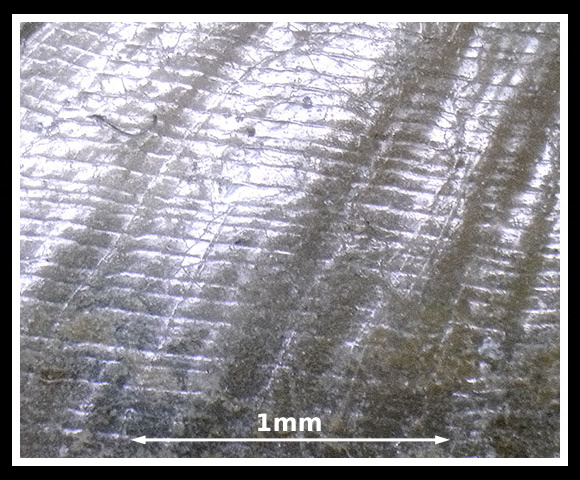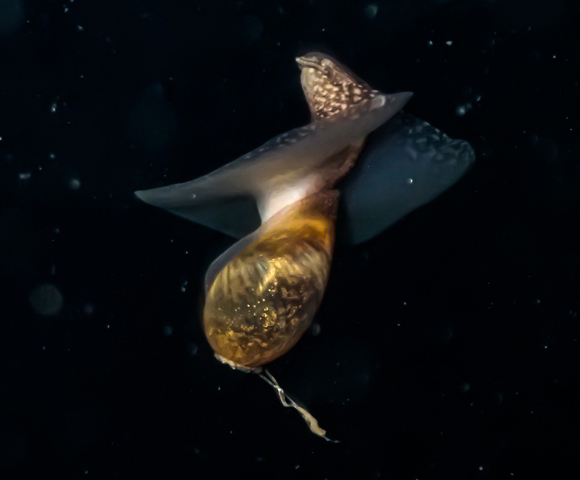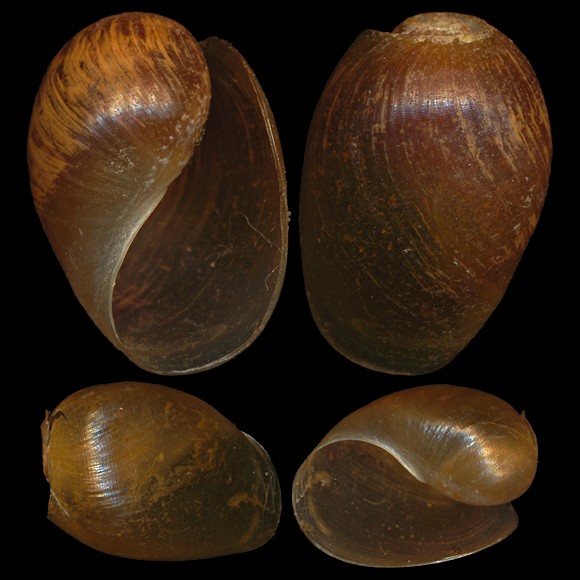
Norway to Canarias, Mediterranean. Herbivorous. Lives shallowly burried in fine sandy or muddy, silty bottoms, chiefly among Zostera fields, from shallow water to lower infralittoral. Rarely seen alive in Mediterranean, except during a few days when it emerges from its substract to feed and breed, forming occasionally chains of many individuals.
Above and below: live collected at 10cm deep, in the lagoon, Venezia, NE. Italy. 11-16mm.
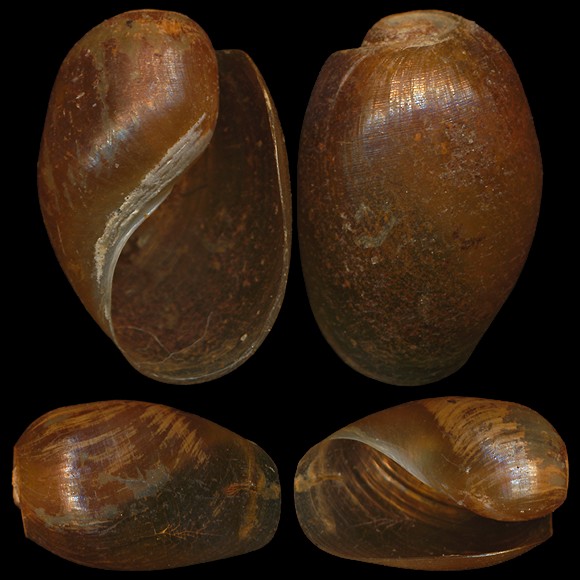
« Testa ovata pellucida, vertice truncato, canaliculato » – O. F. Müller: Zoologiae Danicae prodromus, Copenhagen 1776.
Synonyms: elastica, elegans, flexilis, resiliens…
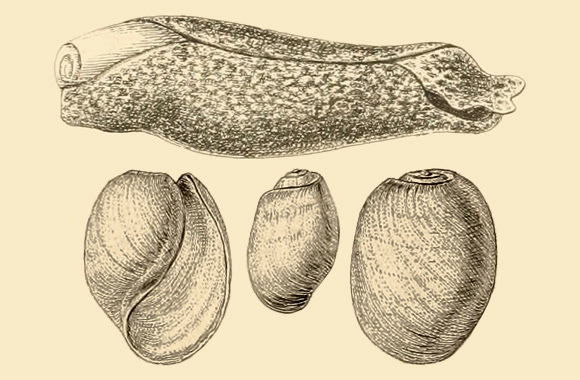
Akera bullata in Forbes & Hanley: A history of British Mollusca and their shells, London 1853, pl. DD and CXIV-D.
« Body varying in colour from greyish or nearly clear white to pale yellowish-white or orange, covered with minute and numerous flake-white or dark specks, and usually streaked in front with interrupted lines of purplish-brown. Mantle spread over the underside of the shell, and partly over the spire or crown. Head, when the animal is crawling, attenuated, and sheathed underneath by the side lobes of the foot ; it is wedge-shaped and bilobed in front (so that occasionally the corners assume the shape of ears or tentacles), and margined by a narrow purplish-brown line. Eyes small and black, but always perceptible. Foot oblong, swollen at its base ; side lobes or flaps slightly tuberculated ; front rounded and narrower than the posterior portion, where the foot dilates and is truncated at the extremity, with angular corners. Gizzard composed of a dozen triangular plates. » – J. G. Jeffreys: British conchology vol. IV, London 1867.
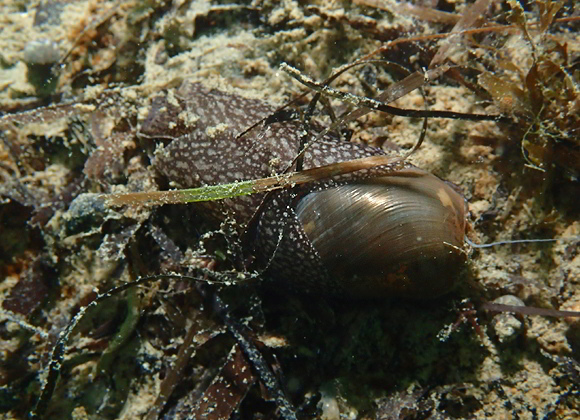
« Habitat : Oozy ground and mud-flats (often among Zostera) in the laminarian zone, in many estuaries […] The foreign distribution of this species extends from Oxfjord in Finmark (Sars) to Vigo Bay (M’Andrew), the French and Italian coasts of the Mediterranean, the Adriatic, and Aegean ; depths recorded 2-20 f. […] Mr. Hyndman says that when touched they give out a purple liquid. […] According to Professor Lovén the egg-case of the present mollusk may be compared to a rope twisted in different ways. […] The flounder appears to feed on it, Müller having taken the shells from the stomach of one caught in the Cattegat. » – Ibid.
Shallow water, eastern end of the Canal du Rhône à Sète, Frontignan, Hérault, S. France. Original picture provided by J. Renoult for iNaturalist – (CC BY-NC).
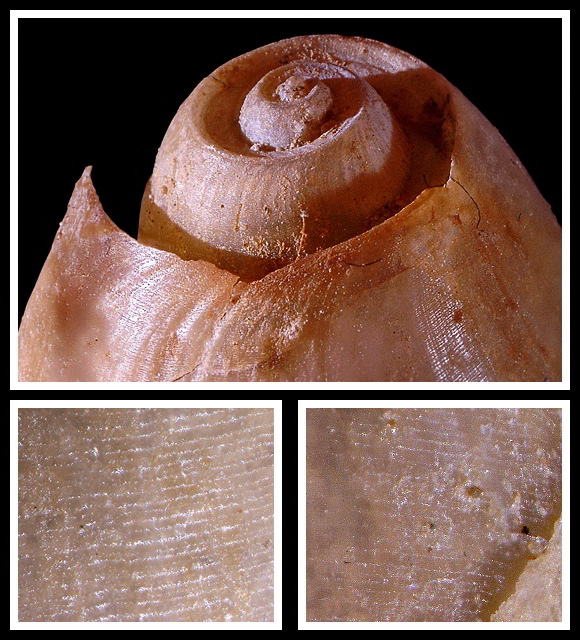
Salt marsh habitat, Gore Cove, Moonfleet, West Fleet Lagoon, Weymouth, Dorset, S. England. Above: the deep sutural furrow of the spire. Below: the spiral microsculpture, made of thin striae separated from each other by circa 55µm.
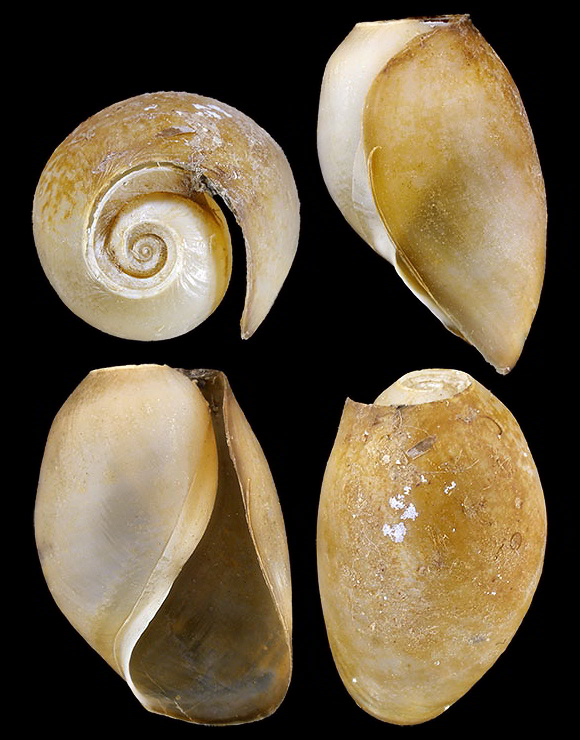
Original pictures provided by S. Clanzig (FR).
– (CC BY-NC-SA) –
